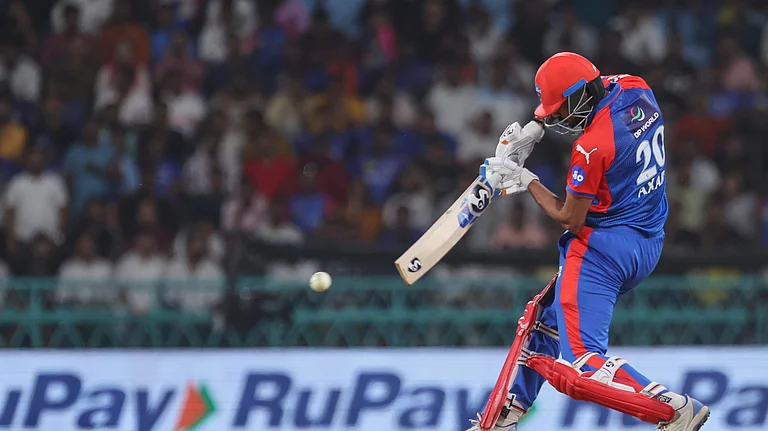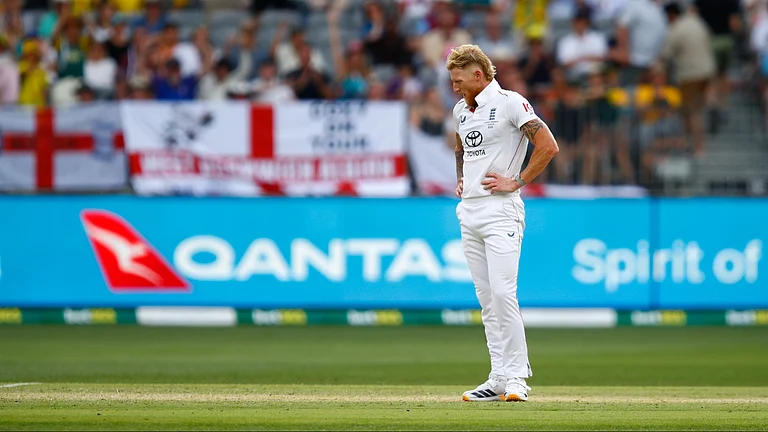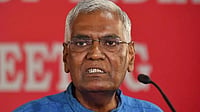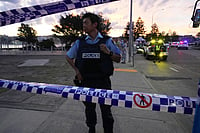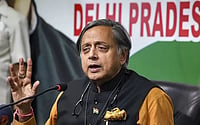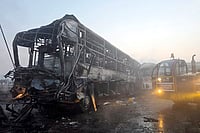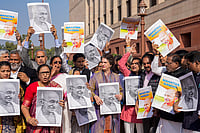WHEN the final results of the elections were announced, the initial assessment of various political parties was that there was something in it for everyone. But as the week progressed, the intransigence of the two main players—Mulayam Singh Yadav and the Kanshi Ram-Mayawati duo—coupled with the re-affirmation of the BJP as a political untouchable made it clear that the results held nothing for anybody.
The consequences were predictable: President’s rule was re-promulgated and the assembly kept in suspended animation. But the decision to reimpose President’s rule was not easy. In fact, two crucial concerns dominated the tense, and sometimes acrimonious, United Front steering committee meeting on October 16: the constitutional validity of imposing President’s rule—Governor Romesh Bhandari had faxed his recommendation for this course of action—and the effect of keeping the legislators in ‘suspended animation’ for a long period.
While Union Home Minister Indrajit Gupta was doubtful about the constitutional validity of such a move, Janata Dal working president Sharad Yadav feared that the loyalties of various MLAs might not be able to stand the strain if the assembly was not constituted. Gupta agreed. Though Mulayam was not present, he cast a long shadow over the meeting. His representative, Samajwadi Party (SP) General Secretary Amar Singh, took umbrage at Sharad Yadav’s remark and "advised" the JD to look after its own MLAs because the SP men would remain loyal. Amar Singh’s cockiness had much to do with the fact that the SP has 110 of the UF’s 134 MLAs.
It was at this juncture that Union Law Minister Ramakant Khalap arrived with a report by Attorney General Ashok Desai which said that while President’s rule could not be extended, it could be re-promulgated and the assembly held in "suspended animation". And despite stray voices of dissent, including that of Union Human Resources Development Minister S.R. Bommai, a ‘reluctant’ consensus emerged at the end of the meeting in favour of President’s rule.
But the dissenters had a lot to say. At the JD political affairs committee meeting a few hours later, Sharad Yadav and Bihar Chief Minister Laloo Yadav said the BJP should have been allowed to form the government. Both leaders had been partial to having the BSP on board and they felt that given Mulayam’s obduracy on Mayawati, this was the only option. But then Laloo has problems of his own with the fodder scam and a poor showing in successive elections; while Sharad Yadav is not powerful enough alone.
United Front sources said Deve Gowda was playing no game this time around apart from initially trying to ascertain whether a compromise candidate was acceptable to the BSP and Mulayam. "Once the effort for an alternate candidate failed, Gowda has gone along with the SP supre-mo’s line," said a senior UF leader.
One of the most interesting developments of the week was the volte-face by Chief Ministers Chandrababu Naidu, M. Karun-anidhi and P.K. Mahanta on using Article 356. At the inter-state council meeting on October 15, they waxed eloquent against it, and the next day they supported the move "in this case". The regional chieftains apparently spoke to Mulayam who gave an assurance that he would lead his party into a Federal Front in the near future. It also gives the regional bosses more clout in the UF.
The road to the impasse began on October 13 when the Congress—a small but significant player with 33 MLAs—threw in its lot with the BSP. At a Congress Working Committee (CWC) meeting, party chief Jitendra Prasada made an impassioned plea in support of Maya-wati as chief minister. He even urged Congress President Sitaram Kesri to issue an ultimatum to the UF if their support to Mayawati was not forthcoming.
The lone dissenting voice of CWC member Rajesh Pilot urged Kesri not to threaten the UF with withdrawal of support. Kesri was given a similar directive from 10 Janpath. He was told that while he could attack the UF, nothing should be done to destabilise the government—at least not till unity moves in the Congress had fructified, and the party could make a bid for power in the next general elections. The Congress president agreed but gatecrashed the UF steering committee meeting to plead the cause of the "poor, Dalit woman". His histrionics cut no ice with Harkishen Singh Surjeet, a key player in negotiations between the SP, BSP and UF, backing Mulayam all the way.
BSP supremo Kanshi Ram, secure in Congress support, appeared to have overplayed his hand. Having failed to force Kesri to issue an ultimatum to the UF, he flirted with the BJP. With a mere 67 MLAs, his claim—"we will take support, but not give it"—seemed to put everybody off, and his formal rebuff to the BJP on October 16 came too late to influence the UF. The lesson for the BSP supremo was clear—both the UF and the BJP were aiming for a polarisation and intended to woo him when it suited them. For once, the boot was on the other foot. By midnight on October 16, the Centre was certain Bhandari’s recommendation was the only way out.
Some constitutional experts said Bhandari had erred. Kha-lap’s contention that the 1965 Kerala case—when then governor A.P. Jain imposed President’s rule on the ground that no party was in a position to form a government— set a precedent, was shot down by experts. In 1979, Article 356 was amended to limit President’s rule to six months, subject to a maximum period of one year following which even Parliament does not have the power to extend it. Desai’s advice that President’s rule could be "re-imposed" was founded on a technicality. Says lawyer Rajeev Dhavan: "Most of the ’60s cases were suspect because then the Congress was losing its grip over the states" and taking arbitrary steps.
Likewise, there have been two instances of President’s rule being imposed because no party came forward to form a government—in Orissa in 1961 and in Rajasthan in 1967. But in both cases, Dhavan said, no party had staked its claim, whereas in , the BJP did come forward. UF managers claim they are on sure legal ground—"the President’s rule promulgated by us is the first of the two allowed because the earlier term was allowed to lapse, and the new assembly kept in suspended animation rather than dissolved."
As the BJP prepared to go to court against Bhandari’s verdict, Kesri faced flak from his own party. At a meeting of AICC office-bearers on October 18, opinion was sharply divided on Kesri’s stubborn refusal to back Mulayam. The party, it was pointed out, had been put in the awkward position of continuing to support the UF government while condemning it for failing to support the BSP in the state. On the other hand, President’s rule would have to be ratified by Parliament in the coming session beginning November 18. If the BJP and Congress do not support the ratification, what would be the consequences for the UF? The jingoistic, pro-Mayawati segment in the Congress, which was keen on the Congress withdrawing support to the UF, quietened down. The question of future alignments, including the possibility of backing the UF, will figure at the CWC’s post-Dussehra session.
The BJP, says general secretary Govinda-charya, "will fight the battle in the courts and among the people"; the Congress is keen that the imbroglio be resolved soon to prevent being handed to the BJP on a platter and Mulayam still nurses hopes of leading a UF government. And no MLA wants fresh elections. In which case the only way out is that parties have to accept that there is something for everybody in the results. And everything for nobody.







